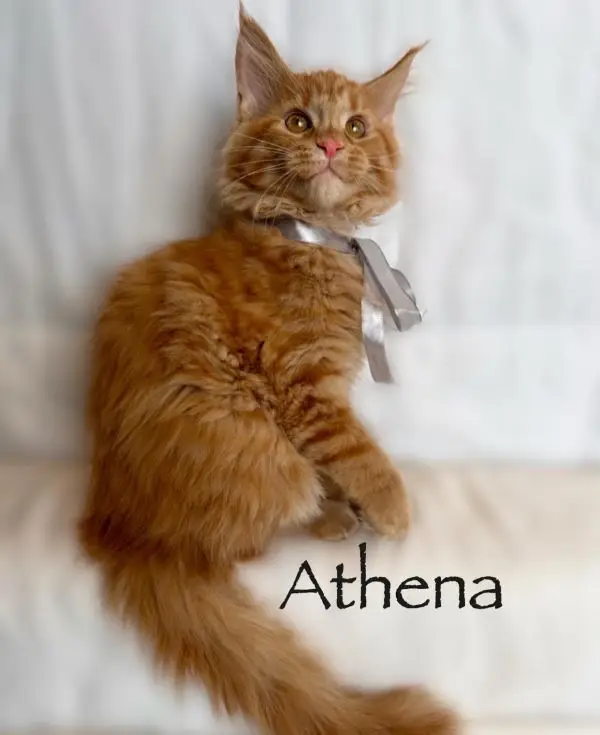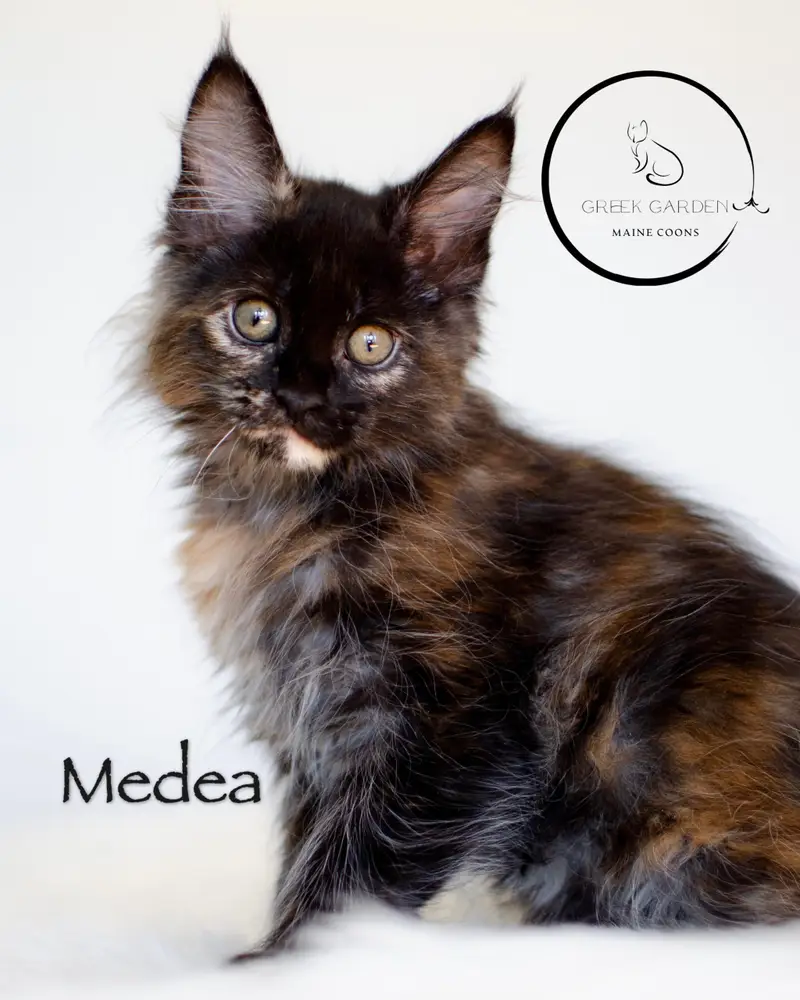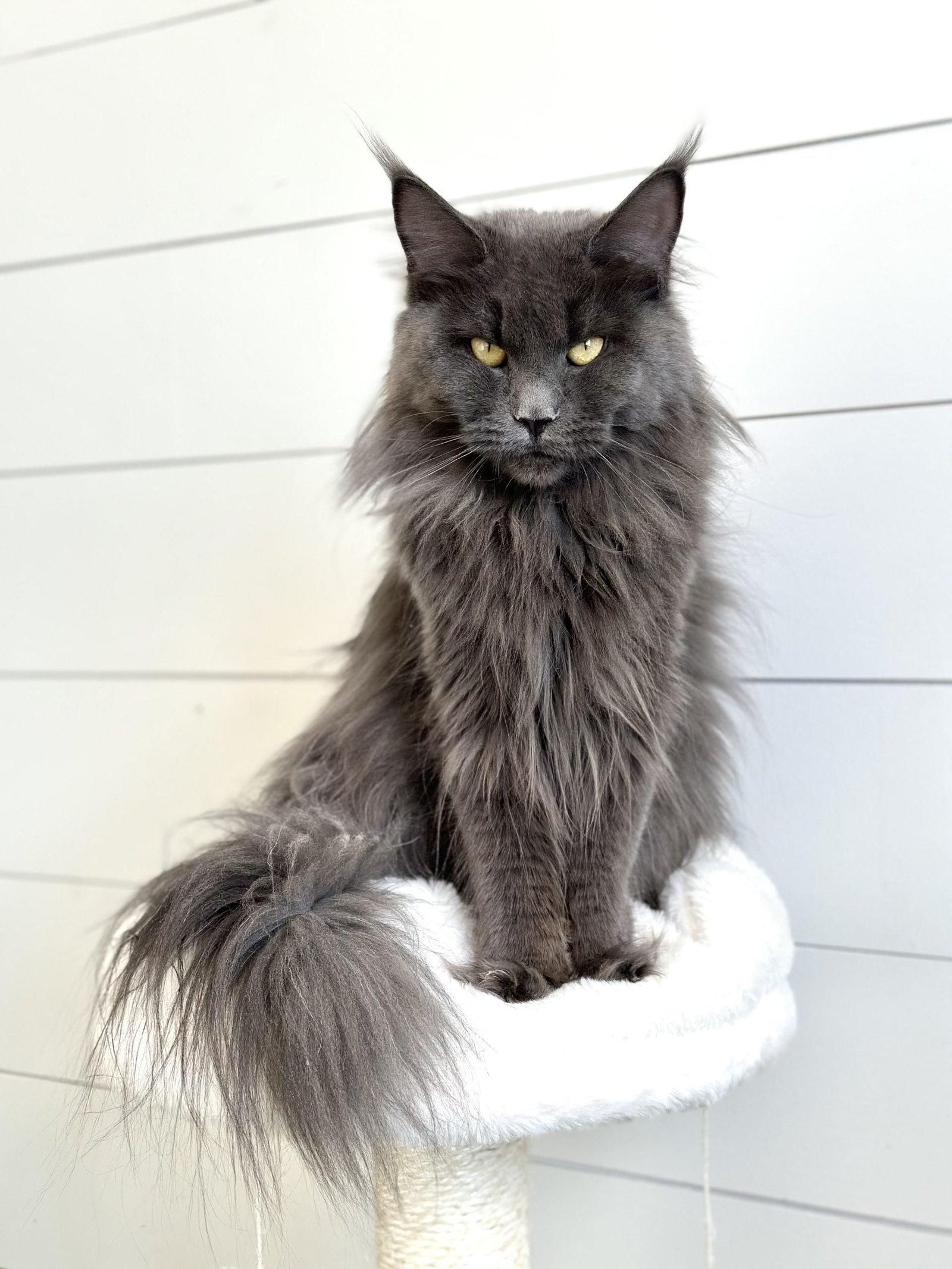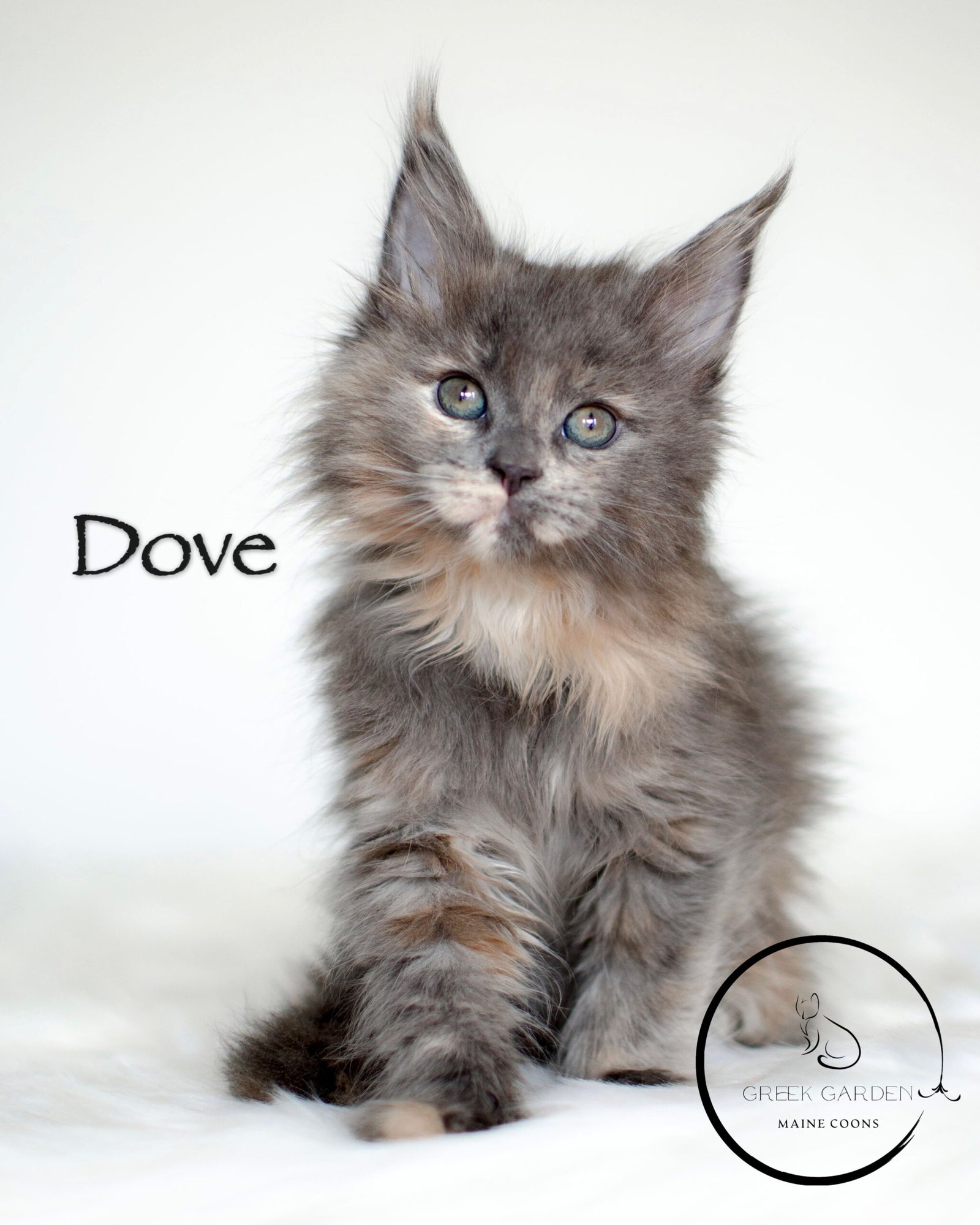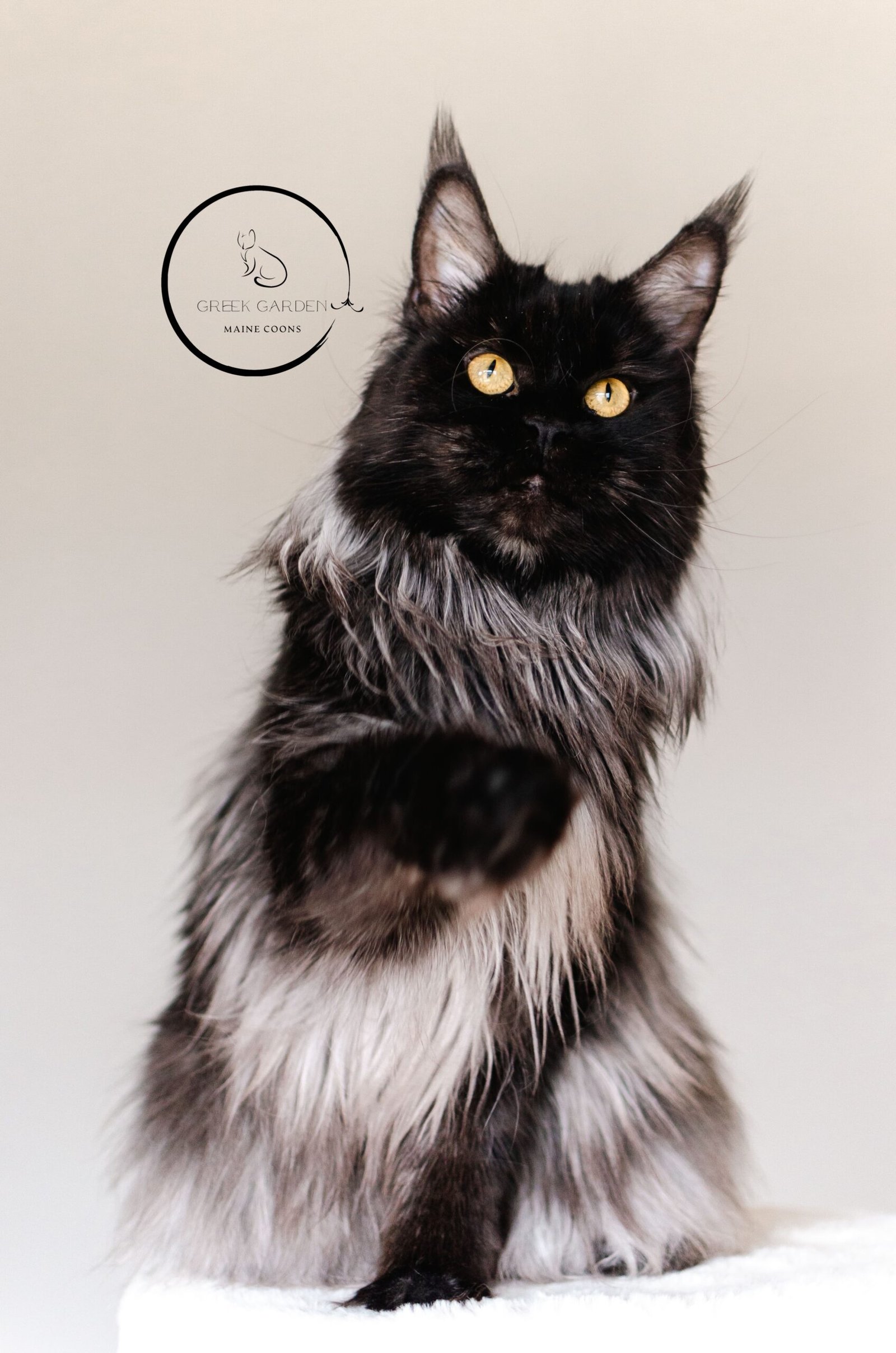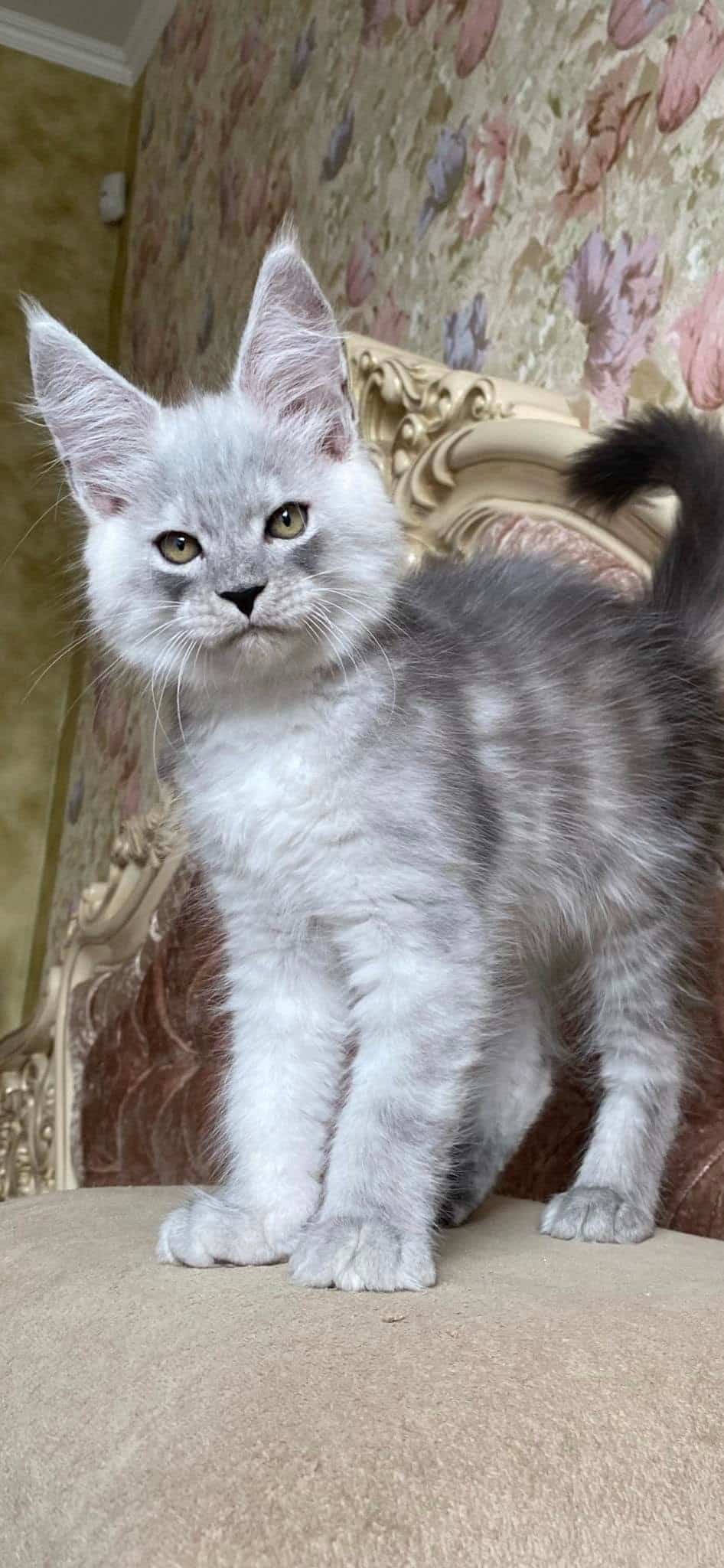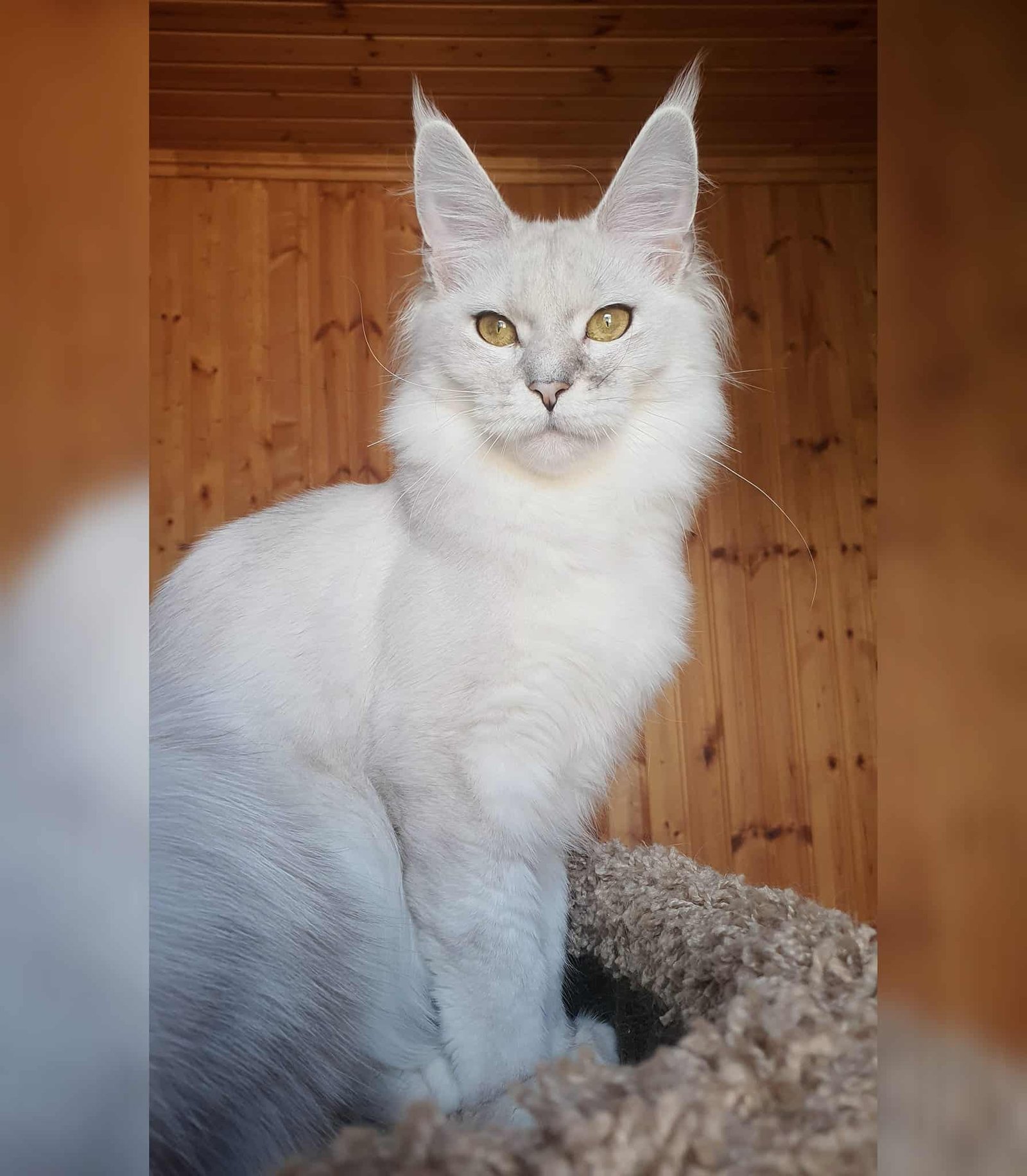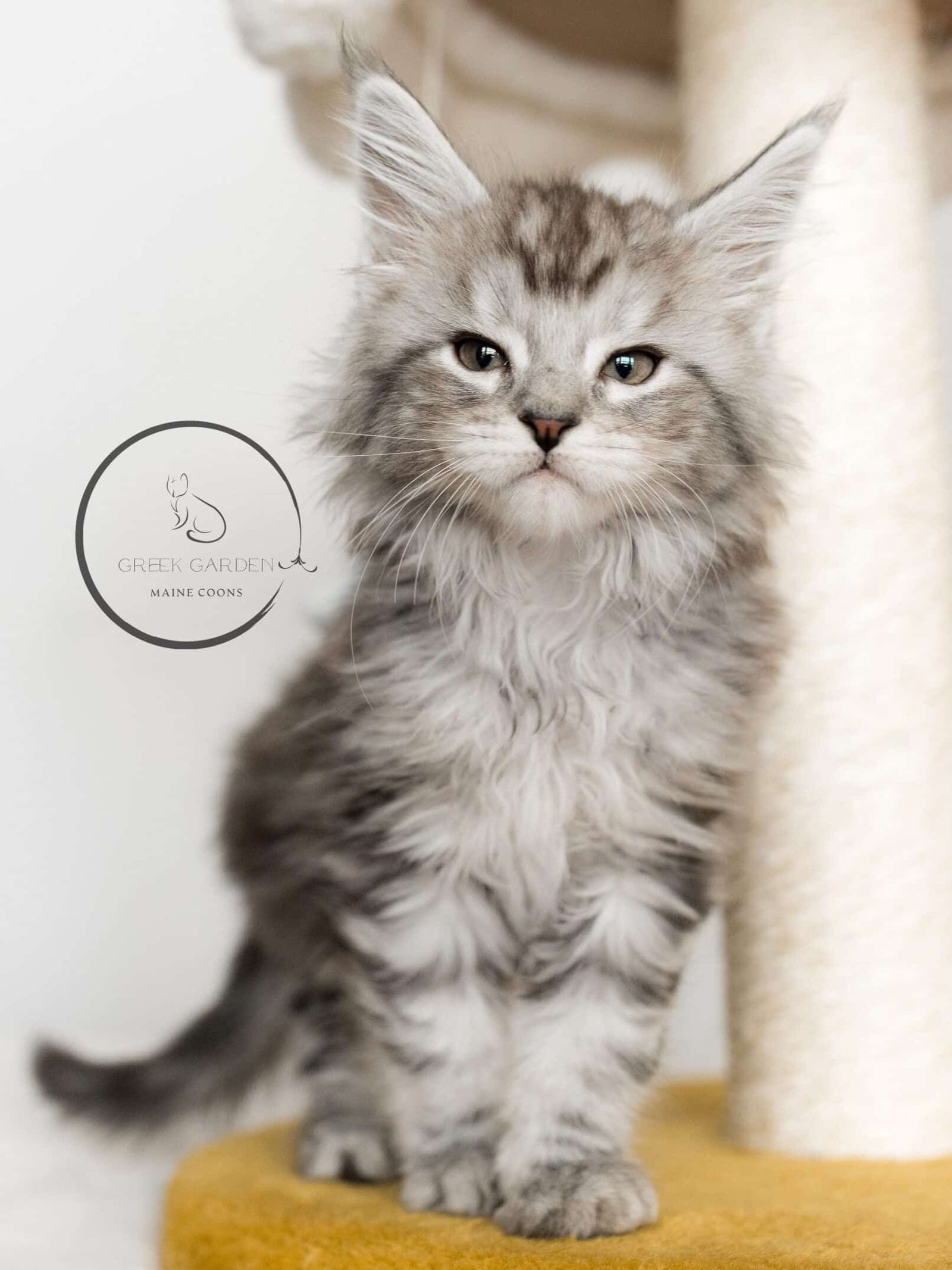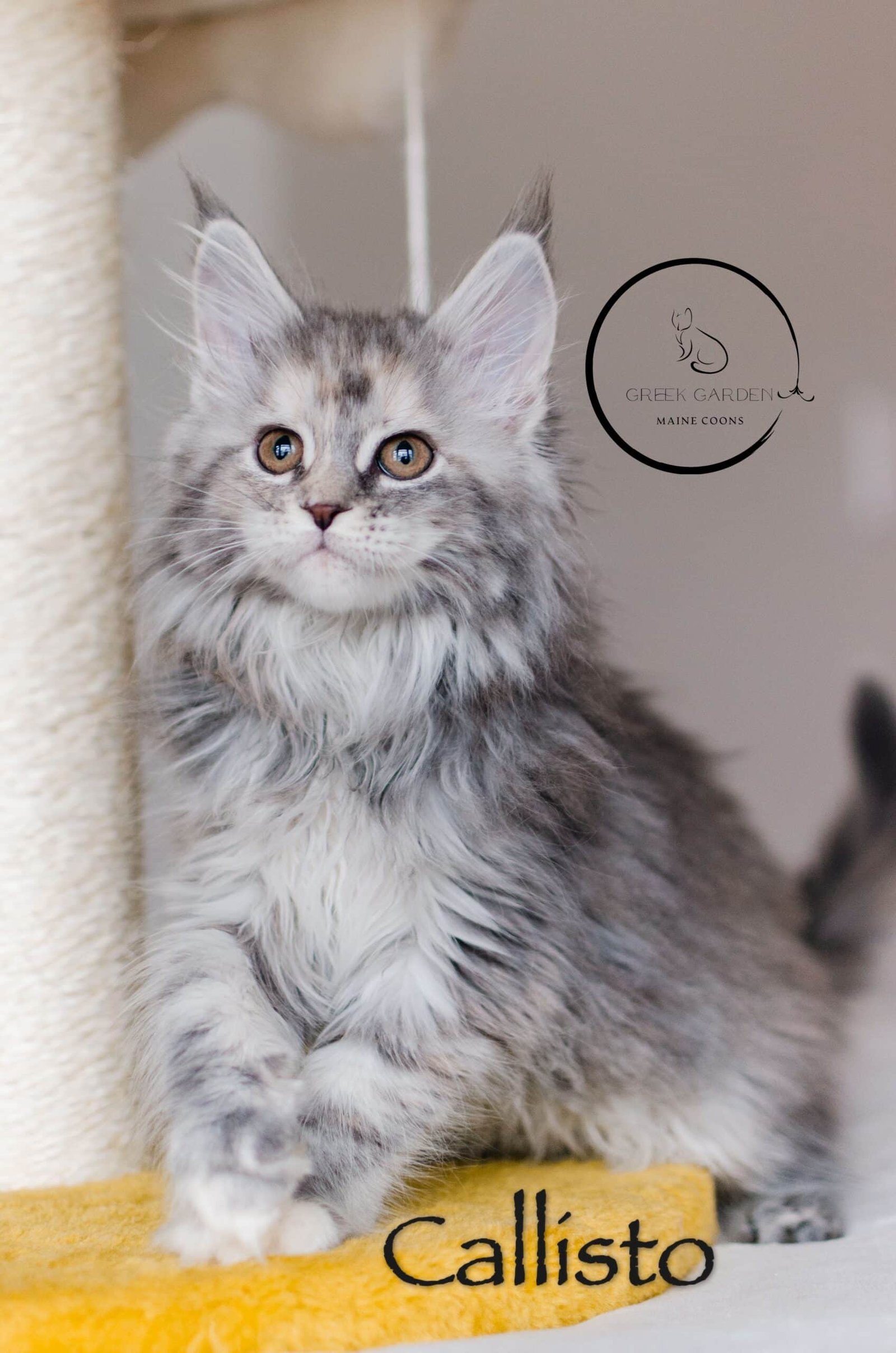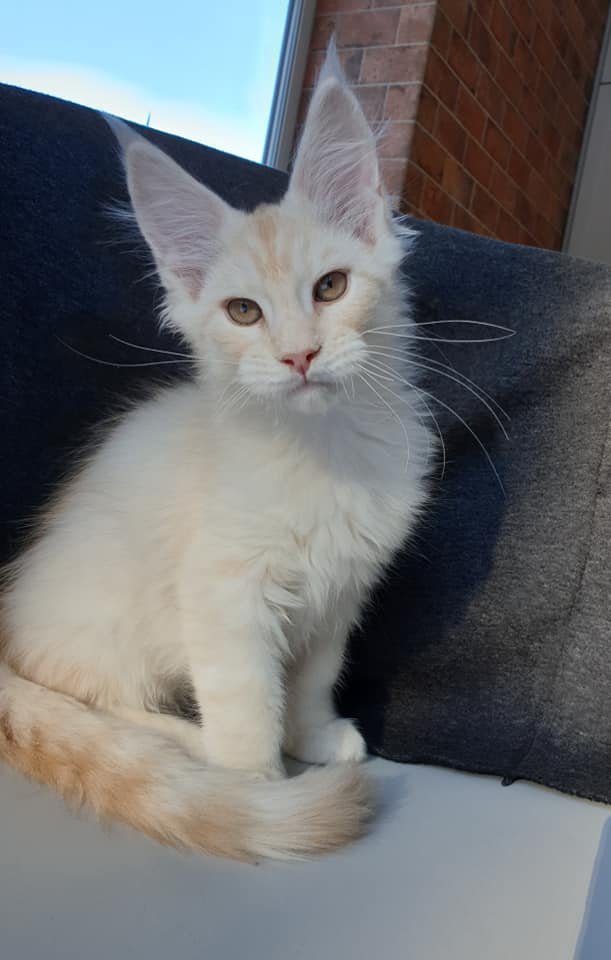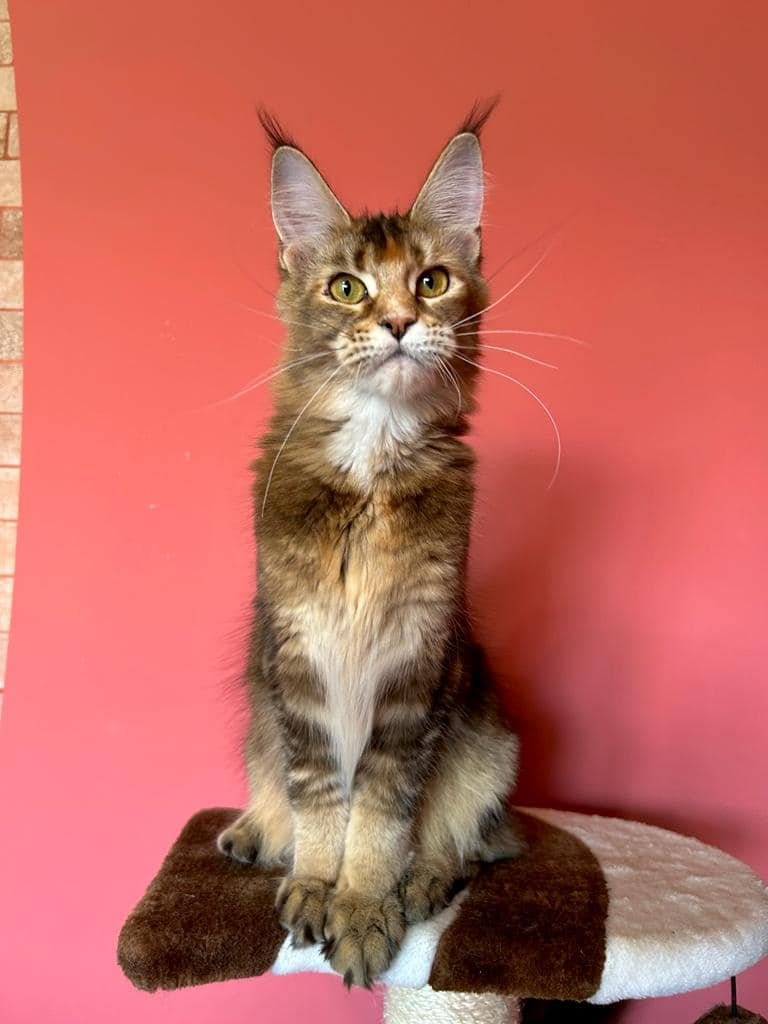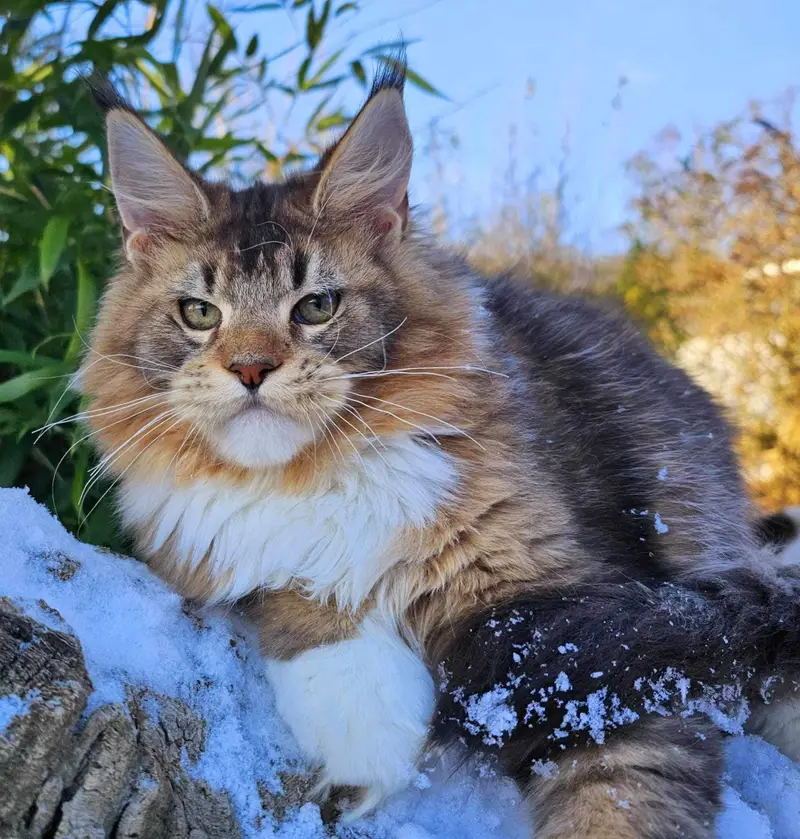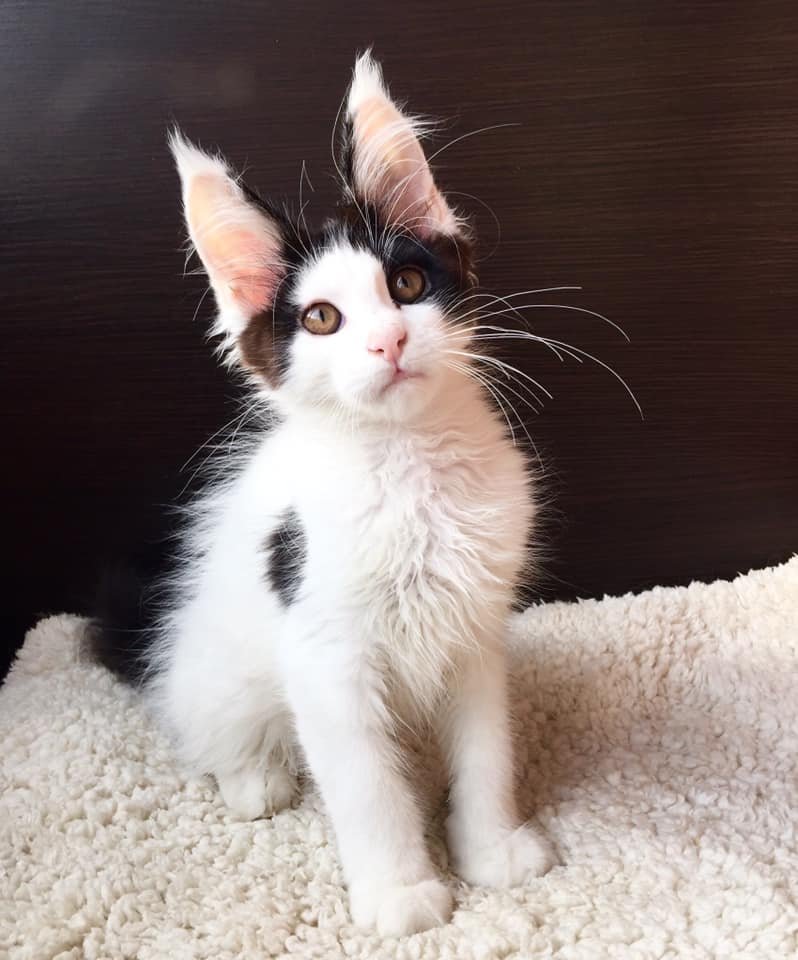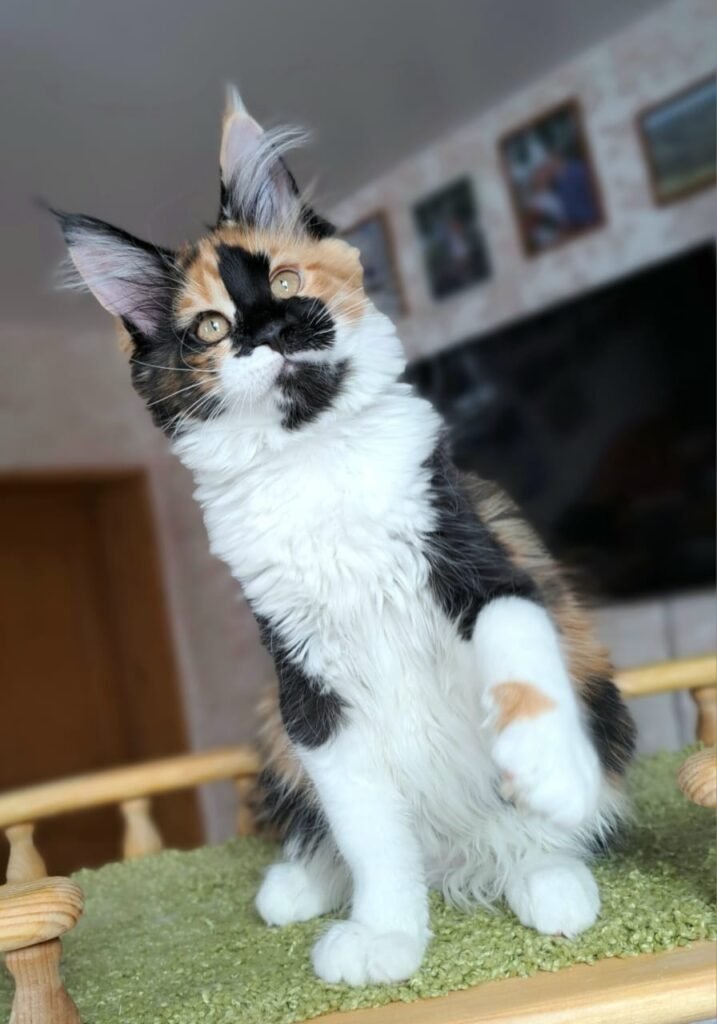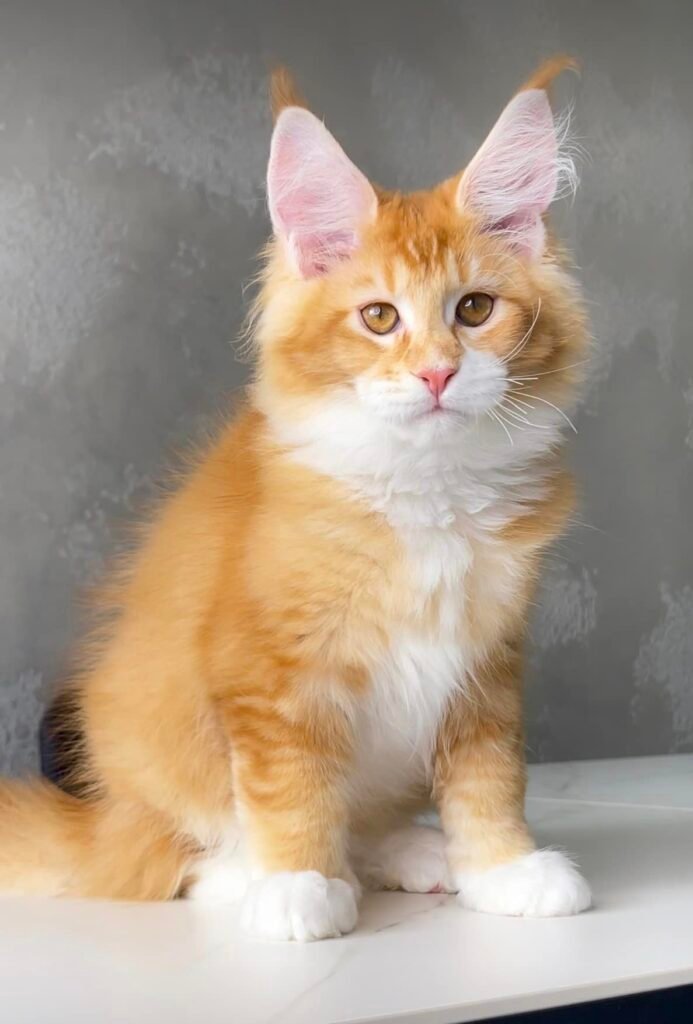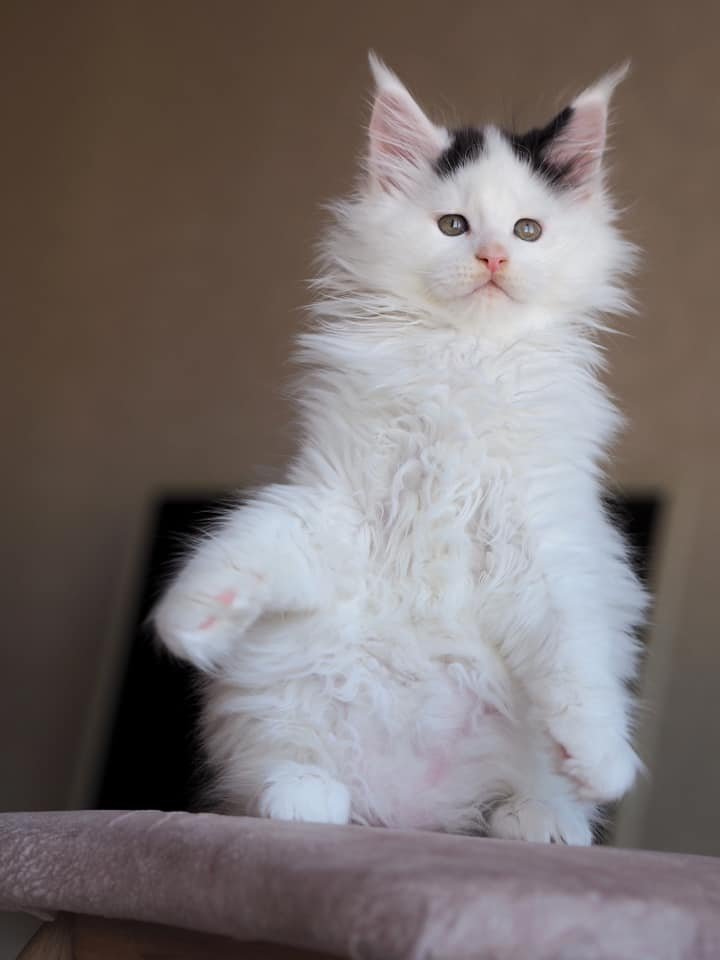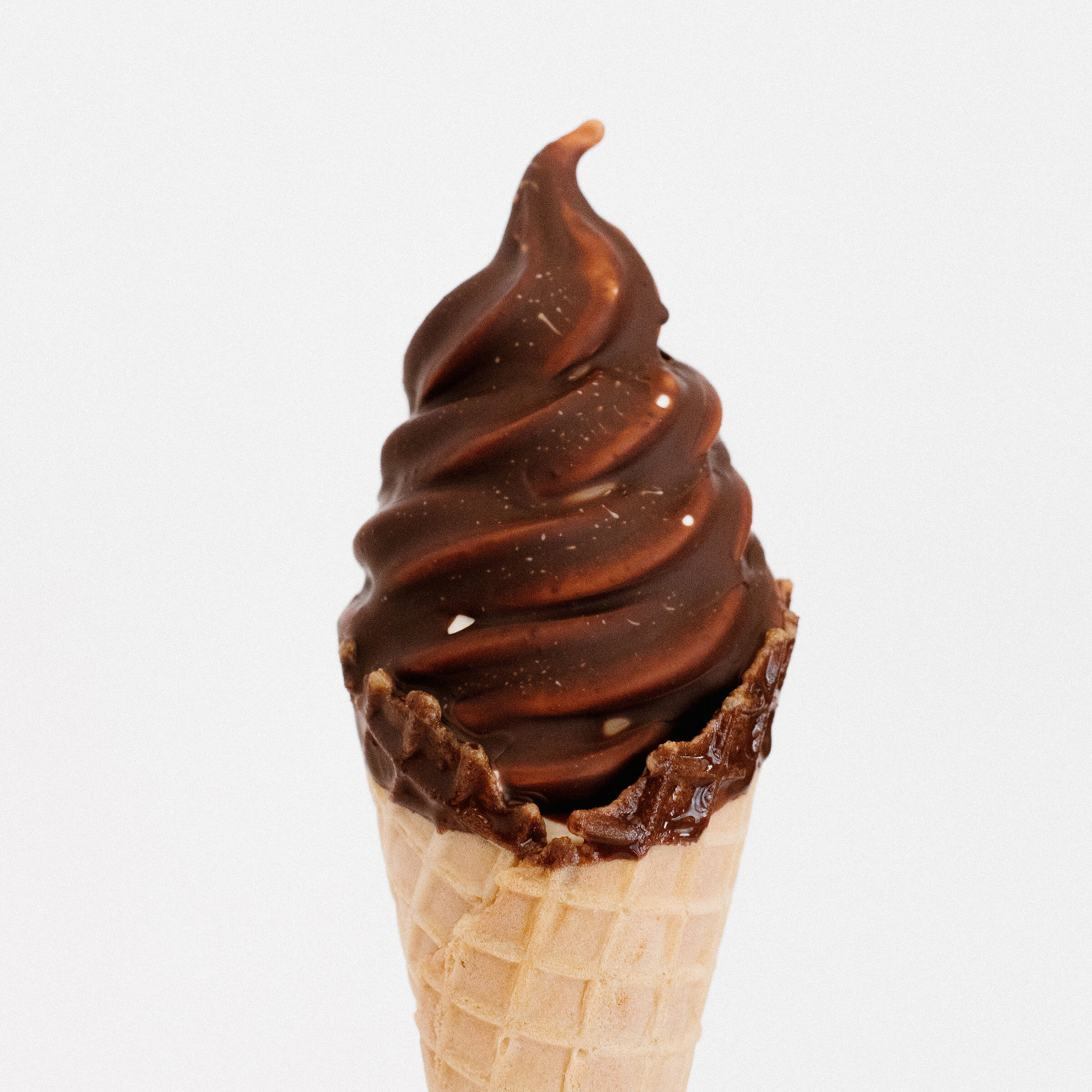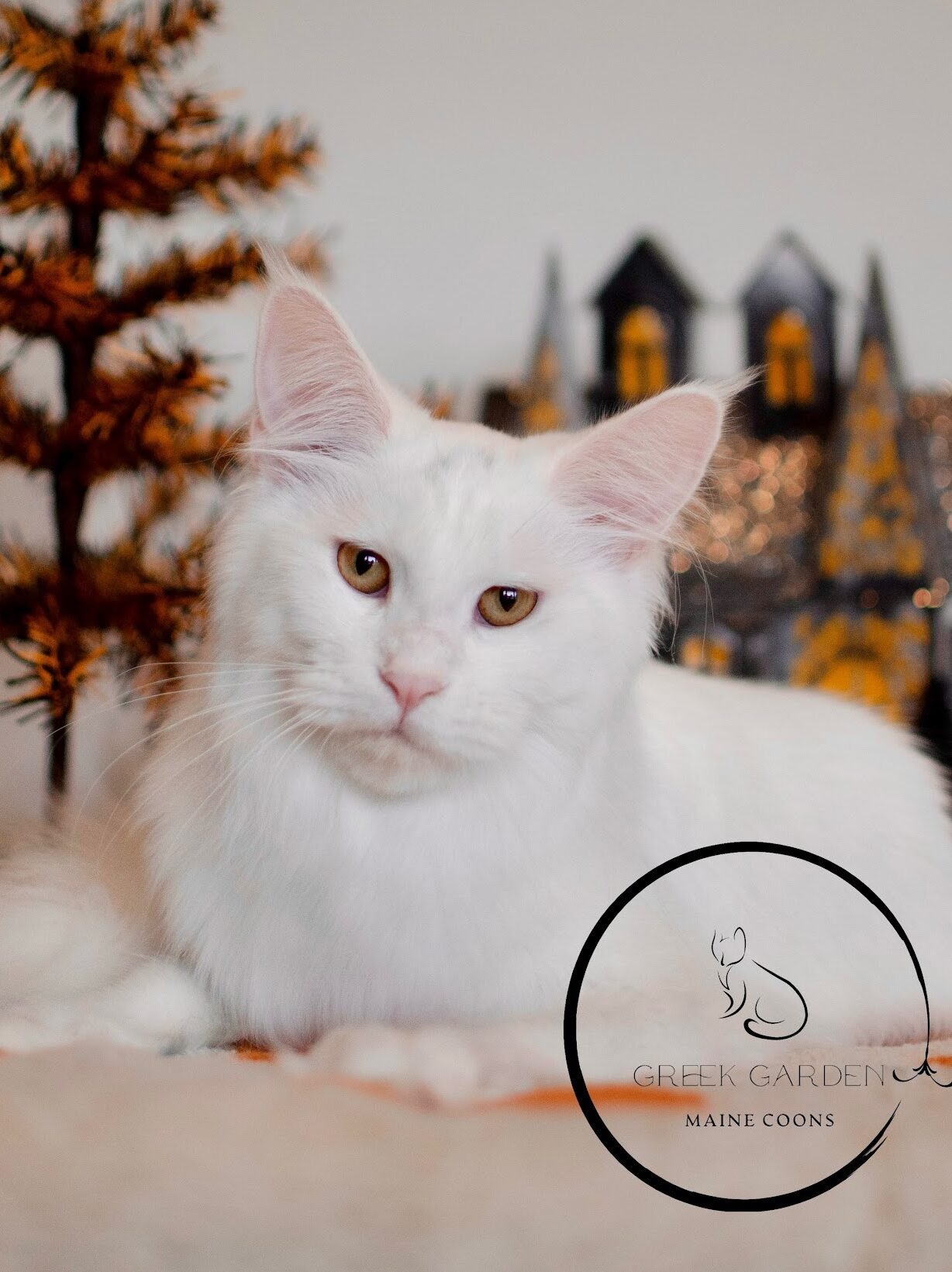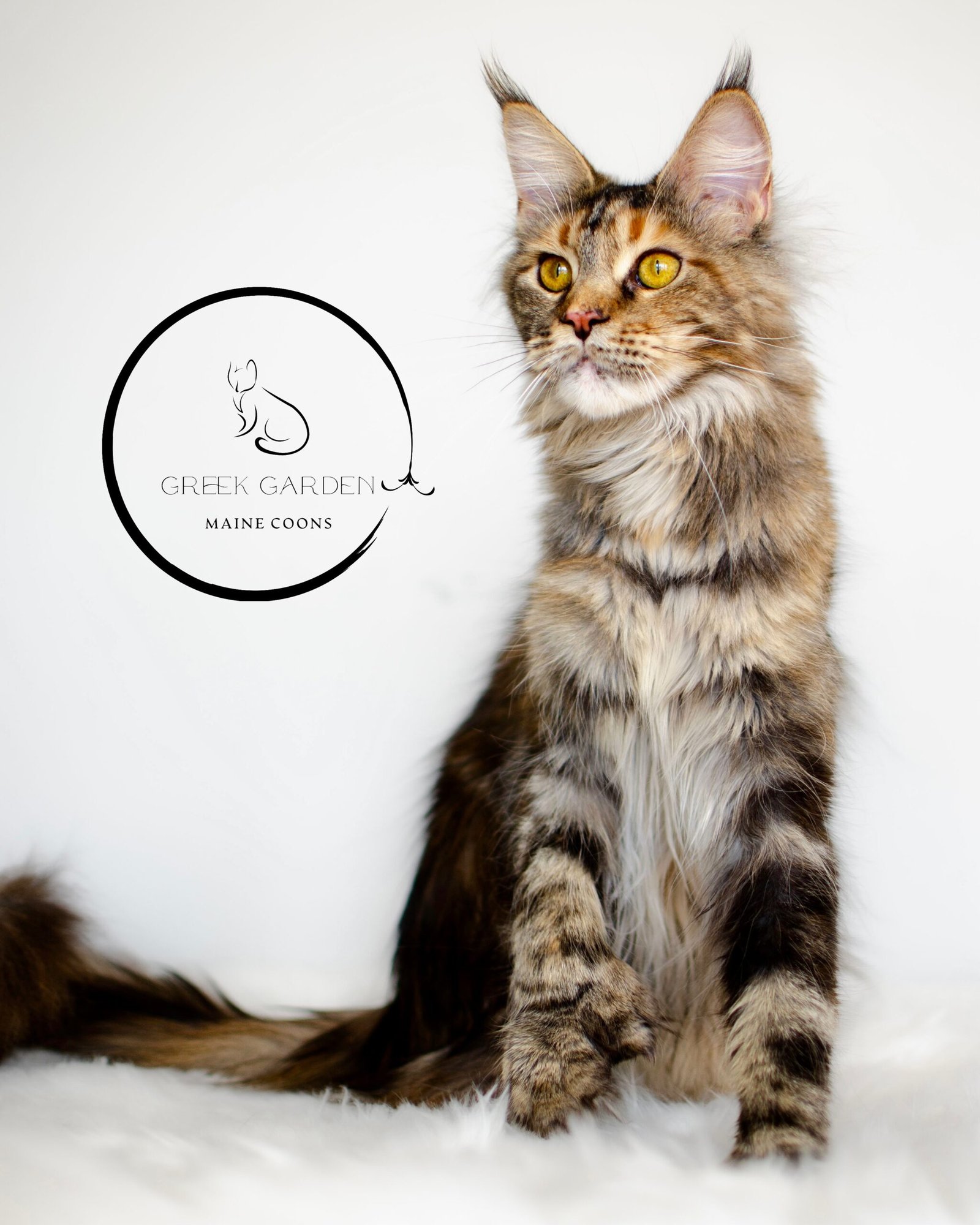Some coloring variations have become very popular in the Maine Coon breed – and with good reason! The dominant melanin inhibitor gene “I” is responsible for all of the fun silver, smoke, shaded, and shell mutations in the Maine Coon breed, and the inhibitor gene’s presence combined with the agouti (tabby) gene as well as a confusing group of interacting genes, the wide-band genes, result in the very rare golden Maine Coons.
We’ll start off with smoke and silver. Smoke and silver are virtually the same thing, smokes can produce silvers and vice versa. The big difference between the two is the tabby gene, agouti. Lack of the tabby gene – solid patterning – combined with the inhibitor gene results in a smoke coat. When the inhibitor gene is combined with a tabby coat, you get silver.
Without going into *too* much detail, essentially, silver and smoke can be added to any of the base colors, and work with both solid and tabby patterns. Solid patterned cats with the inhibitor gene will always be smoke, tabby patterned cats with the gene will always be silver. You can get blue smoke (solid), black smoke (solid), red smoke (solid), black smoke tortoiseshell (solid), blue silver (tabby), black silver (tabby), red silver (tabby), cream…you get it. This is why asking for a “smoke” or “silver” Maine Coon without specifying a base color tends to frustrate your breeder. (:
Shaded and shell cats are more extreme versions of silver and smoke. Where silver and smoke affect around 50% of the hair shaft, some mutation along the way was able to increase that to anywhere from 75-90% of the hair shaft, resulting in an extremely light – but not completely white – coat.
Differentiating shaded and shell is the same idea as silver and smoke. Shaded is the extreme version of silver (tabby patterned) and shell is the extreme version of smoke (solid pattern). Those closer to the 75% range are often called “high smoke” and “high silver“. These two are not officially recognized colors, instead defaulting on paper to basic smoke and silver.
It’s worth noting that shaded and shell cats often come with a negative stigma, which in many cases is well-deserved. A significant part of the issue stems from a particular cattery, often referred to as a “cat mill,” which is responsible for producing most of these lines. This cattery neglects important aspects of feline health, permits excessive inbreeding, and fails to prioritize genetic diversity in their breeding practices.
You might observe that many shaded and shell cats look sickly, and seem to have abnormally high rates of FIP. With higher levels of inbreeding, immune systems suffer and often fail. There are a couple of wonderful breeders working hard to bring diversity back into these colors through foundation work, so we can have hope that their future will be brighter.




